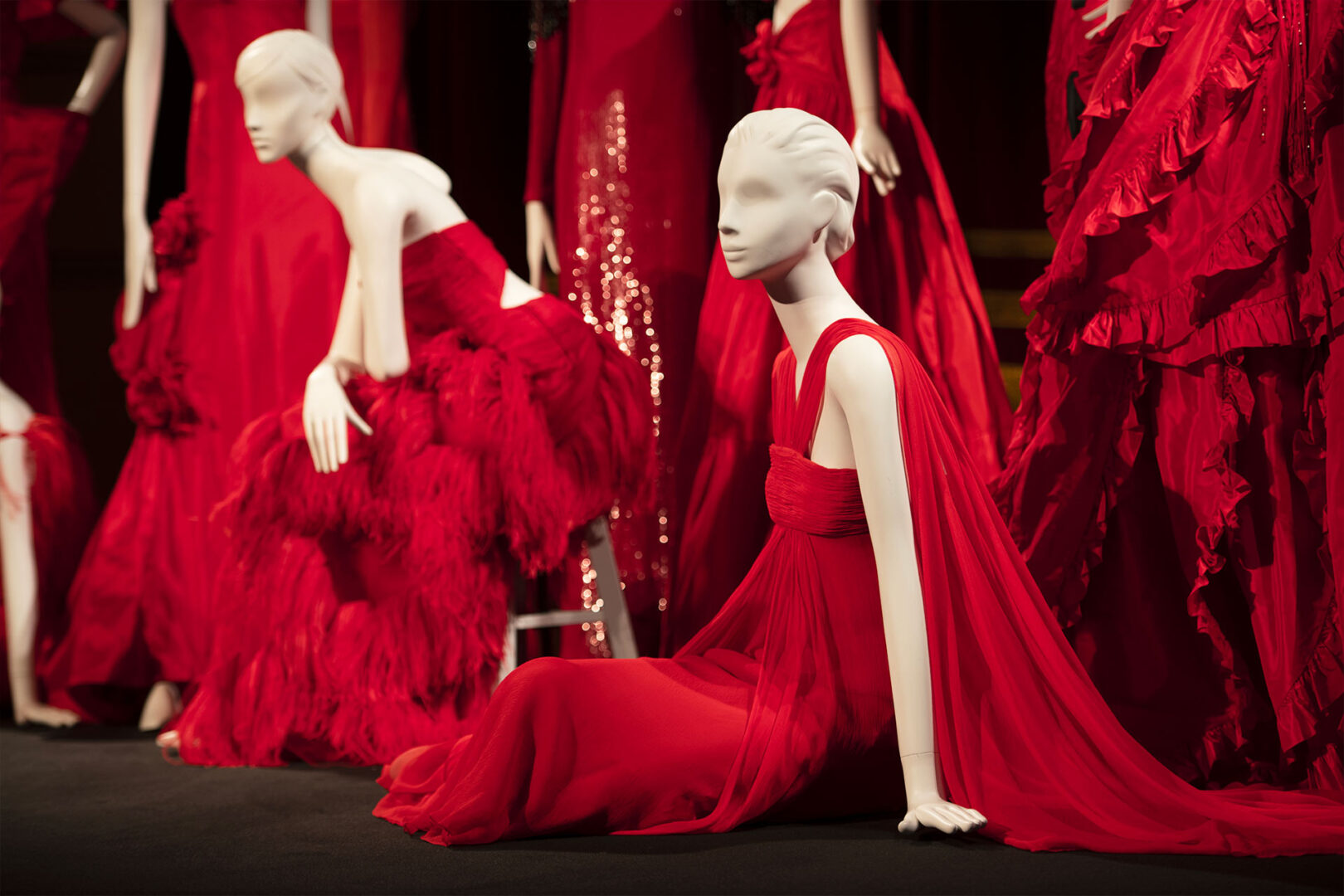To celebrate the 90th birthday of the Maison’s founder, some of his creations will be on display from May 11 to June 5 in his hometown, Voghera, Italy
Ninety years in age and a fifty-year career
Valentino Garavani was born in Voghera on May 11, 1932, and turned ninety. His life and career have influenced the fashion system in concrete ways. His brand, which now sees Pierpaolo Piccioli as creative director, keeps reframing the symbolic heritage developed by Garavani. The experience in Paris as a couturier and then the historic meeting with Giancarlo Giammetti, his partner and companion, made the Valentino brand Italian excellence.
Founded in Rome in 1957, the brand achieved success by the 1960s, combining class and innovation that allowed it to dress from Jacqueline Kennedy to Naomi Campbell. The label and character’s notoriety were clear from his relationship with celebrities and supermodels.
For example, in 1994, Linda Evangelista, Brandy, Nadja Auermann, Christy Turlington, and Claudia Schiffer walked the runway for him in Paris. From the black color to the iconic red Valentino, he defined every characteristic of the brand until he achieved the appellation of the last emperor of fashion, as the docu film about him released in 2008 defines him.
The approach to fashion and the institution of the label
Valentino’s path starts right from Voghera, where his passion for the fashion world grew alongside fashion designer Ernestina Salvadeo. In the Fifties he moved to Paris to study at the École des Beaux-Arts and the Chambre Syndicale de la Couture Parisienne.
He collaborated with several famous ateliers, including Jean Dessès and Guy Laroche, who contributed to shaping his style. After opening his first boutique in Rome, Garavani met Giammetti, who managed the company’s business aspects. The brand’s official debut took place at Palazzo Pitti in 1962 and was the first success of seeing the creations featured on the cover of French Vogue.
Iconic colors such as black and white and then red, along with the defined lines of the clothes, created a distinctive character of the brand. Details such as bows and flowers, polka dot prints, chiffon, and then the logo are also integral to the label’s aesthetic.
The passing of the baton
In 2008 Maria Grazia Chiuri and Pierpaolo Piccioli, responsible for the accessories area since 1999, became Valentino’s creative directors. The two, who have shared an innovative path for twenty-five years since their studies, reworked the brand’s heritage by combining it with the definition of contemporary elegance.
In 2016, however, Chiuri decided to pursue a different course by becoming the first woman as creative director of Christian Dior. Piccioli continues to lead the Valentino label, receiving several awards, such as the Designer of the Year at the 2018 Fashion Awards in London.
His revolution within the brand goes on: in 2020, he decided to have a Valentino show in Italy and not in Paris as a sign of support for the Covid-19 situation. In 2022 Piccioli defined a new era for the Maison marked by its Pink PP.
The significance of Red Valentino
Valentino Garavani’s story could be traced no other way than through his creations, placed inside the space of a Voghera theater. The site-specific installation, which will be on display from May eleven to June five, showcases designs made by Valentino from the 1960s through the 2000s.
The stage gives a distinct sign of recognition by offering a selection of dresses colored all in red, a shade later named after its creator. Its patented blend mixes one hundred percent magenta, yellow, and just ten percent black. On the other hand, in the floor space, some newspaper photos and drawings by the Designer himself are used to illustrate the journey of the brand and the clothes, along with shots of them as protagonists. These enable visitors to immerse themselves in the era and the occasion that made the dress in question a central feature.
Opposition to the monochromatic show
In contrast with the whole red scene, there are boxes occupied by members of the general public. A crowd composed of thirty-six dresses selected from the archive promise to tell the story of the different eras and styles crossed by the brand. «Alongside the dresses: sketches, drawings, drafts, newspaper clippings, photographs, and documents that restore to the visitor the spirit of the time when those dresses were first shown to the world and reconstruct through minimal accounts how the world received and perceived them», the brand points out.
The meaning of the choice of Theater
Voghera’s Teatro Sociale represents a historic place in the city where Garavani was born. Opened in 1845 with its circular structure presenting three tiers of boxes, it has hosted several artists after opening with Giuseppe Verdi’s I Lombardi alla prima crociata. In 2018, funds were raised to be able to restore the Theater and reopen it in 2020.
However, that sector has been hard hit by the Covid-19 pandemic, and the Social Theater is also coming back to life thanks to Valentino’s 90th birthday exhibition. The personal meaning the Designer attaches to this choice and to the specific dress display is a metaphor in which women are actresses and spectators together. «Without differences, all belong to a global vision that represents a total idea of beauty and femininity, in which each subject is on the same level», the Maison illustrates.
The Valentino Maison
Valentino Garavani and Giancarlo Giammetti founded the brand in 1960. It has played a crucial role within the national and international fashion scene by promoting Made in Italy.




















